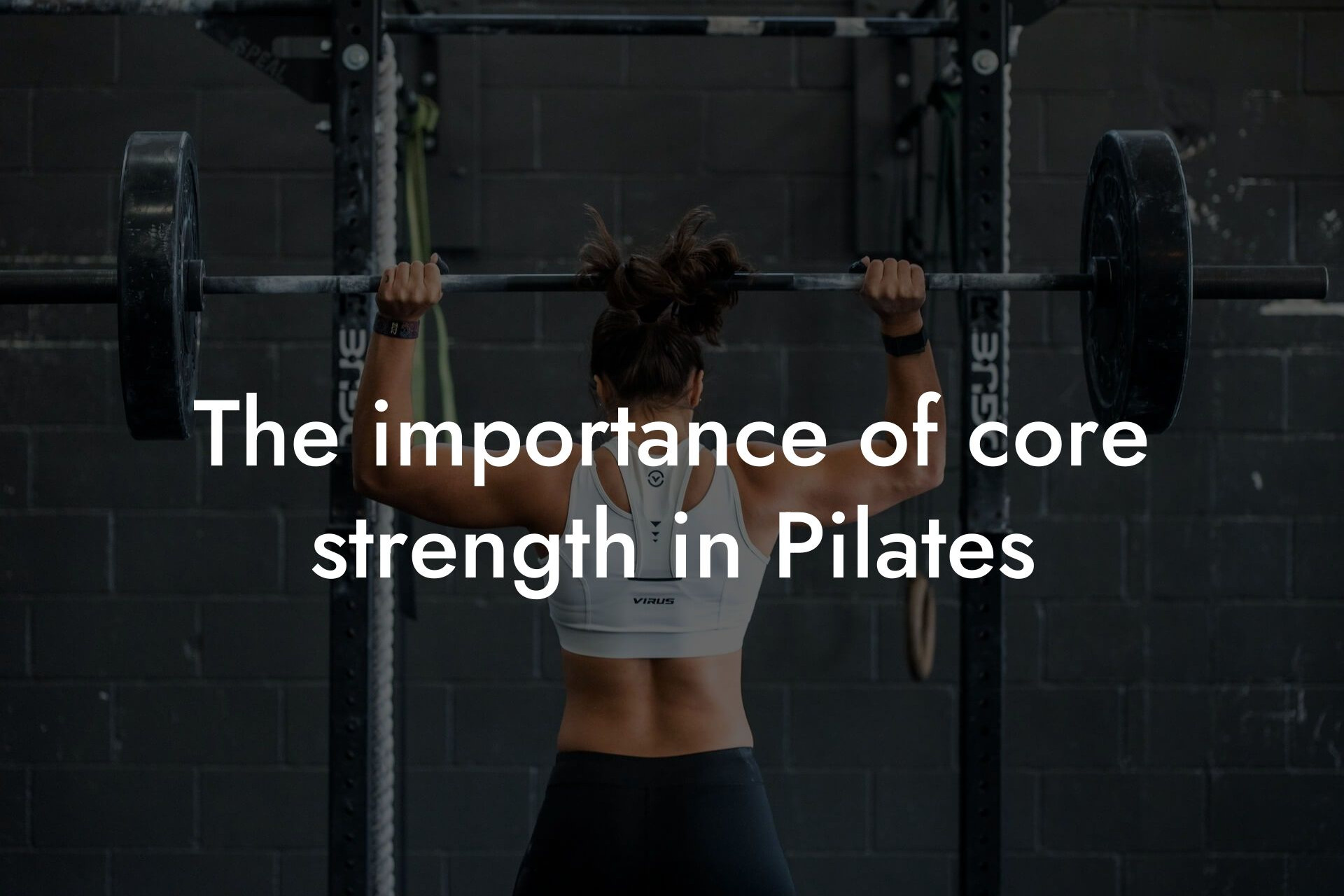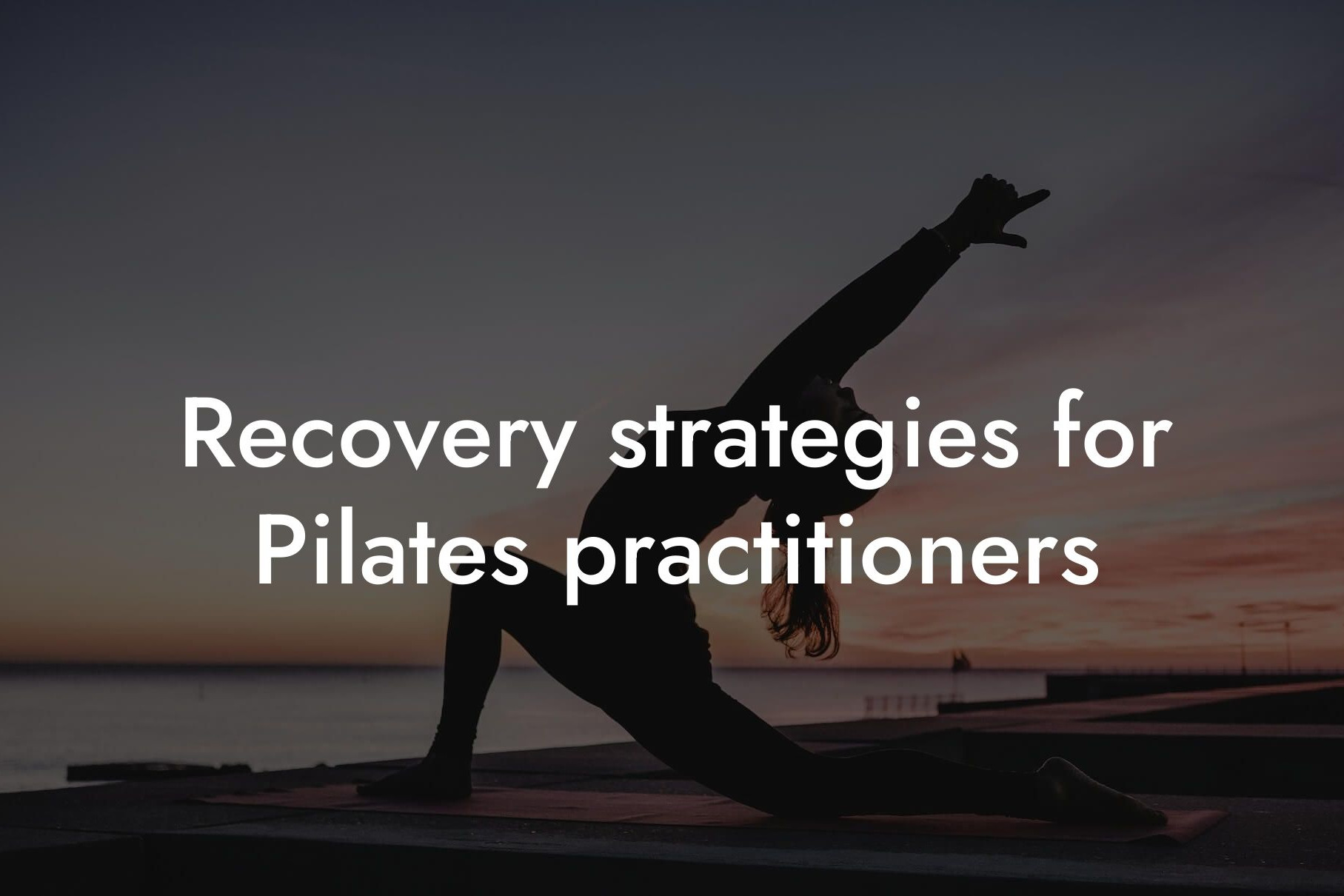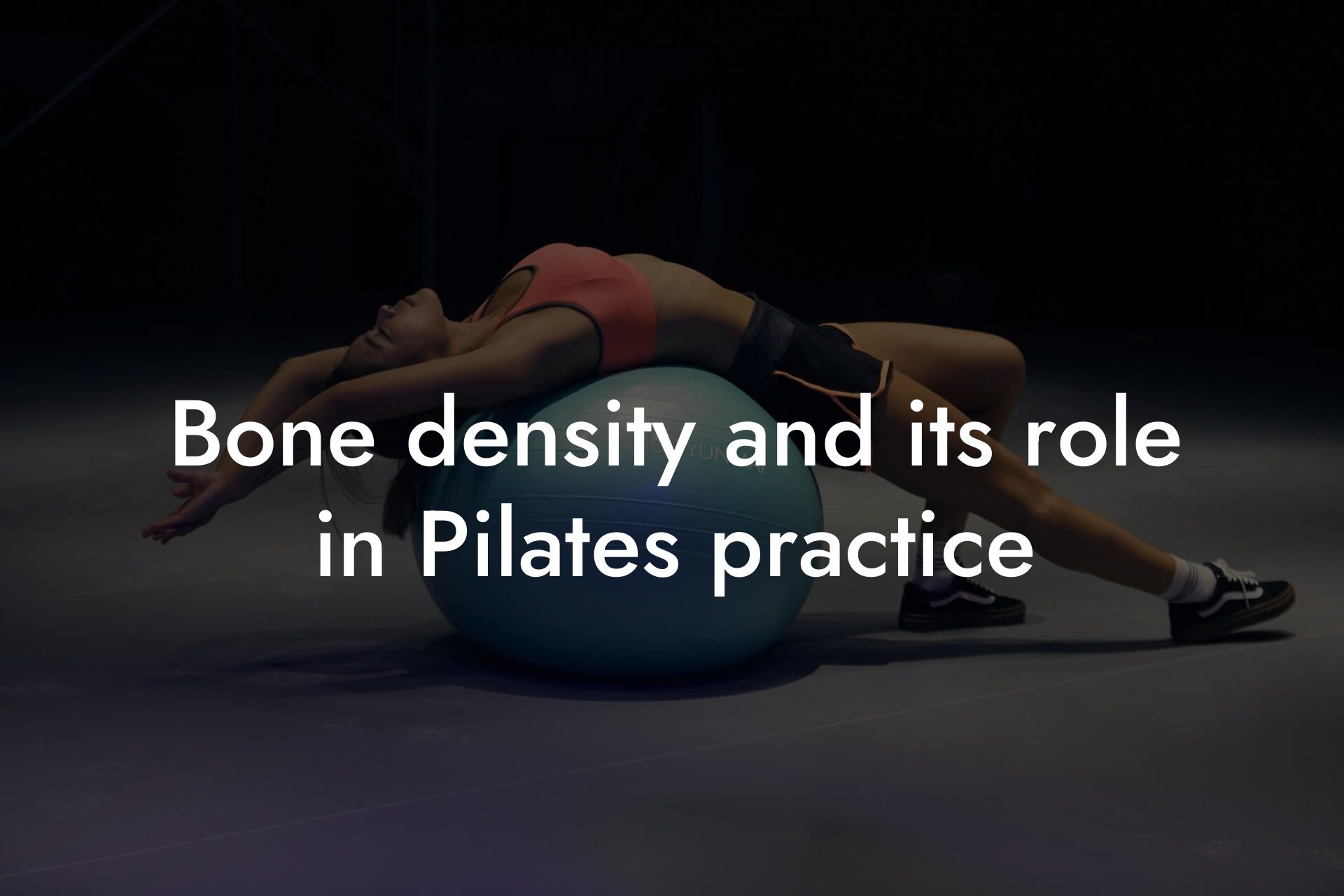As a high-earning professional, you understand the importance of maintaining a healthy and fit physique. Pilates is a popular form of exercise that can help improve your physical appearance, increase bone density, and enhance overall body composition. However, did you know that your body composition plays a significant role in your Pilates performance? In this article, we'll delve into the relationship between body composition and Pilates performance, and how understanding this connection can help you optimize your workout routine and achieve your fitness goals.
Table of Contents
- What is Body Composition?
- The Impact of Body Fat on Pilates Performance
- The Importance of Lean Mass for Pilates Performance
- How Body Composition Affects Core Strength and Stability
- The Relationship Between Body Composition and Flexibility
- How Body Composition Impacts Balance and Coordination
- Optimizing Body Composition for Pilates Performance
- Frequently Asked Questions
What is Body Composition?
Body composition refers to the percentage of fat and lean mass in your body. It's a critical aspect of overall health and fitness, as it affects your metabolism, energy levels, and athletic performance. A healthy body composition typically consists of a low percentage of body fat and a high percentage of lean mass, which includes muscle, bone, and water. At Tano Performance Group, we use DEXA scanning technology to provide a comprehensive body assessment, giving you a detailed breakdown of your body composition.
The Impact of Body Fat on Pilates Performance
Excess body fat can significantly impact your Pilates performance. Carrying extra weight can put additional strain on your joints, making it more challenging to perform exercises that require flexibility, balance, and control. Furthermore, excess body fat can reduce your power-to-weight ratio, making it more difficult to generate force and speed during Pilates movements. Additionally, high levels of body fat can lead to decreased mobility, flexibility, and balance, making it more challenging to maintain proper form and technique during Pilates exercises.
The Importance of Lean Mass for Pilates Performance
On the other hand, having a high percentage of lean mass is essential for optimal Pilates performance. Lean mass, which includes muscle, bone, and water, provides the strength, power, and endurance needed to perform Pilates exercises effectively. A high percentage of lean mass can improve your overall athletic performance, increase your metabolism, and enhance your bone density. Furthermore, having a high percentage of lean mass can help you maintain proper form and technique during Pilates exercises, reducing your risk of injury and improving your overall results.
How Body Composition Affects Core Strength and Stability
Core strength and stability are critical components of Pilates performance. A strong core provides the foundation for efficient and effective movement, allowing you to maintain proper form and technique during exercises. However, excess body fat can weaken your core muscles, making it more challenging to engage your core and maintain stability during Pilates exercises. On the other hand, having a high percentage of lean mass in your core muscles can improve your overall core strength and stability, enhancing your Pilates performance and reducing your risk of injury.
The Relationship Between Body Composition and Flexibility
Flexibility is another critical component of Pilates performance. Having a high percentage of body fat can reduce your flexibility, making it more challenging to perform exercises that require range of motion and mobility. On the other hand, having a high percentage of lean mass can improve your flexibility, allowing you to move more efficiently and effectively during Pilates exercises. Furthermore, having a high percentage of lean mass can improve your overall joint health, reducing your risk of injury and enhancing your Pilates performance.
How Body Composition Impacts Balance and Coordination
Balancing and coordination are essential skills for Pilates performance. However, excess body fat can affect your balance and coordination, making it more challenging to perform exercises that require precision and control. On the other hand, having a high percentage of lean mass can improve your balance and coordination, allowing you to move more efficiently and effectively during Pilates exercises. Furthermore, having a high percentage of lean mass can improve your overall proprioception, reducing your risk of injury and enhancing your Pilates performance.
Optimizing Body Composition for Pilates Performance
So, how can you optimize your body composition for Pilates performance? The first step is to undergo a comprehensive body assessment using DEXA scanning technology. This will provide you with a detailed breakdown of your body composition, allowing you to identify areas for improvement. From there, you can develop a personalized workout routine that targets your specific needs and goals. This may include a combination of Pilates exercises, resistance training, and cardiovascular exercise, as well as a healthy diet and lifestyle. By optimizing your body composition, you can improve your Pilates performance, enhance your overall health and fitness, and achieve your fitness goals.
In conclusion, body composition plays a critical role in Pilates performance. Understanding the relationship between body composition and Pilates performance can help you optimize your workout routine, enhance your overall health and fitness, and achieve your fitness goals. By maintaining a healthy body composition, you can improve your core strength and stability, flexibility, balance, and coordination, and reduce your risk of injury. At Tano Performance Group, we're committed to helping you achieve your fitness goals through our comprehensive body assessment and personalized workout routines. Contact us today to learn more about how we can help you optimize your body composition for Pilates performance.
Frequently Asked Questions
What is body composition and why is it important for Pilates performance?
Body composition refers to the percentage of fat and lean mass in your body. It's essential for Pilates performance because it affects your overall strength, flexibility, and mobility. A healthy body composition enables you to move efficiently, maintain proper alignment, and engage the correct muscles during Pilates exercises.
How does body fat percentage impact Pilates performance?
A high body fat percentage can hinder Pilates performance by reducing flexibility, increasing joint stress, and making it more challenging to maintain proper form. Excess body fat can also lead to decreased muscle strength and endurance, making it more difficult to execute movements effectively.
What is the ideal body fat percentage for Pilates?
The ideal body fat percentage for Pilates varies depending on age, gender, and fitness goals. Generally, a body fat percentage between 18-24% for men and 25-31% for women is considered ideal for optimal Pilates performance.
How does lean mass impact Pilates performance?
Lean mass, which includes muscle and bone tissue, is essential for Pilates performance. It provides the strength, power, and endurance needed to execute movements correctly. A higher lean mass percentage can improve Pilates performance by increasing muscle strength, flexibility, and overall athleticism.
What is the relationship between bone density and Pilates performance?
Bone density is crucial for Pilates performance, as it affects the strength and resilience of your bones. Low bone density can increase the risk of injury, particularly in weight-bearing joints. Pilates exercises that focus on weight-bearing and resistance training can help improve bone density, leading to better overall performance.
How can I measure my body composition?
There are several ways to measure body composition, including dual-energy X-ray absorptiometry (DXA), skinfold measurements, bioelectrical impedance analysis (BIA), and hydrostatic weighing. Consult with a healthcare professional or registered dietitian to determine the best method for your needs.
What is the role of muscle imbalances in Pilates performance?
Muscle imbalances occur when certain muscles are overactive or underactive, leading to poor posture, decreased strength, and increased risk of injury. Pilates exercises can help identify and address muscle imbalances, improving overall performance and reducing the risk of injury.
How does core strength impact Pilates performance?
Core strength is essential for Pilates performance, as it provides the stability and control needed to execute movements correctly. A strong core can improve posture, balance, and overall athleticism, leading to better Pilates performance.
What is the importance of flexibility in Pilates?
Flexibility is critical for Pilates performance, as it allows for efficient movement and proper alignment. Good flexibility can improve range of motion, reduce muscle tension, and enhance overall Pilates performance.
How can I improve my flexibility for Pilates?
Regular stretching exercises, foam rolling, and self-myofascial release can help improve flexibility for Pilates. It's also essential to incorporate exercises that target specific muscle groups, such as the hamstrings, hip flexors, and lower back.
What is the role of proprioception in Pilates performance?
Proprioception is the ability to sense the position and movement of your body. It's essential for Pilates performance, as it helps you maintain proper alignment, engage the correct muscles, and execute movements efficiently.
How can I improve my proprioception for Pilates?
Exercises that challenge your balance, coordination, and body awareness can help improve proprioception for Pilates. This includes activities like yoga, tai chi, and balance training, as well as Pilates exercises that focus on proprioception, such as single-leg squats and balance poses.
What is the relationship between body composition and injury risk in Pilates?
Body composition plays a significant role in injury risk in Pilates. Excess body fat can increase the risk of injury, particularly in weight-bearing joints, while a high lean mass percentage can reduce the risk of injury by providing additional strength and support.
How can I modify Pilates exercises to accommodate my body composition?
Modifying Pilates exercises to accommodate your body composition involves adjusting the intensity, volume, and focus of your workout. For example, if you have a high body fat percentage, you may need to focus on exercises that improve flexibility and strength, while reducing the intensity and volume of your workout.
What is the importance of proper alignment in Pilates?
Proper alignment is critical for Pilates performance, as it helps maintain efficient movement, reduces the risk of injury, and engages the correct muscles. Good alignment also improves posture, balance, and overall athleticism.
How can I improve my alignment for Pilates?
Improving alignment for Pilates involves developing body awareness, engaging the correct muscles, and practicing exercises that focus on proper alignment. This includes exercises like planks, bridges, and teasers, as well as activities that challenge your balance and coordination.
What is the role of breathing in Pilates performance?
Breathing is essential for Pilates performance, as it helps maintain proper alignment, engages the correct muscles, and improves overall athleticism. Deep, controlled breathing can also reduce stress and improve focus during Pilates exercises.
How can I improve my breathing for Pilates?
Improving breathing for Pilates involves developing a consistent breathing pattern, engaging your core, and practicing exercises that focus on deep, controlled breathing. This includes activities like yoga, meditation, and diaphragmatic breathing exercises.
What is the importance of mind-body connection in Pilates?
The mind-body connection is critical for Pilates performance, as it helps develop body awareness, improves focus, and enhances overall athleticism. A strong mind-body connection can also reduce stress, improve mood, and increase overall well-being.
How can I improve my mind-body connection for Pilates?
Improving the mind-body connection for Pilates involves developing body awareness, practicing mindfulness, and engaging in activities that challenge your focus and concentration. This includes exercises like meditation, yoga, and Pilates exercises that focus on body awareness and control.
Can Pilates help with weight loss?
Yes, Pilates can help with weight loss by improving muscle strength, increasing metabolism, and enhancing overall athleticism. However, it's essential to combine Pilates with a healthy diet and regular cardio exercise for optimal weight loss results.
How often should I practice Pilates to see results?
The frequency of Pilates practice depends on your goals and current fitness level. Generally, practicing Pilates 2-3 times per week can lead to noticeable improvements in strength, flexibility, and overall athleticism. However, more frequent practice may be necessary for optimal results.
What are some common mistakes to avoid in Pilates?
Common mistakes to avoid in Pilates include poor alignment, inadequate breathing, and incorrect muscle engagement. It's essential to focus on proper form, engage the correct muscles, and practice exercises with control and precision to avoid injury and maximize results.
How can I incorporate Pilates into my busy schedule?
Incorporating Pilates into a busy schedule involves finding a consistent practice routine, prioritizing your workouts, and making adjustments as needed. Consider practicing Pilates at home, scheduling sessions with a instructor, or incorporating Pilates exercises into your daily routine.
Here are some related articles you might love...
- The importance of core strength in Pilates
- Recovery strategies for Pilates practitioners
- Bone density and its role in Pilates practice
- Nutrition tips for maximizing energy during Pilates sessions
- Using DEXA scans to optimize Pilates training
- How to integrate Pilates into a balanced fitness routine
- Reducing body fat for improved Pilates results
- Maintaining flexibility and muscle tone with Pilates
- Pilates for injury prevention and rehabilitation
Zak Faulkner
Zak Faulkner is a leading authority in the realm of physical health and body composition analysis, with over 15 years of experience helping professionals optimise their fitness and well-being. As one the experts behind Tano Performance Group, Zak has dedicated his career to providing in-depth, science-backed insights that empower clients to elevate their physical performance and overall health.
With extensive knowledge of DEXA technology, Zak specializes in delivering comprehensive body assessments that offer precise data on body fat, muscle mass, bone density, and overall physique. His expertise enables individuals to make informed decisions and achieve their fitness goals with accuracy and confidence. Zak’s approach is rooted in a deep understanding of human physiology, combined with a passion for helping clients unlock their full potential through personalised strategies.
Over the years, Zak has earned a reputation for his commitment to excellence, precision, and client-focused service. His guidance is trusted by top professionals who demand the best when it comes to their health. Whether advising on fitness programs, nutritional strategies, or long-term wellness plans, Zak Faulkner’s insights are a valuable resource for anyone serious about taking their health and fitness to the next level.
At Tano Performance Group, Zak continues to lead our Content Team revolutionising how professionals approach their physical health, offering unparalleled expertise that drives real results.




